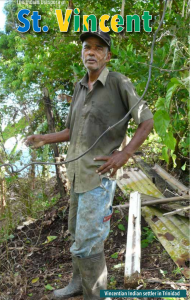The Indian Diaspora in St Vincent Part 2
The history of the group of Indians known as “the Argyle Seven.”
On October 7, 1882, about 50 Indians
from Argyle Estate marched all the
way to Kingstown to bring their labour contract grievances directly to the Lieutenant Governor.
On reaching the capital, seven of
them were identified as ringleaders
and promptly arrested on the criminal charge of vagrancy, i.e. they had left the estate without permission, and had gone beyond the two-mile limit.
However, their courage, determination and sacrifice led the Governor to order an investigation into their complaints.
Their case led to the Colonial Office
declaring that Indian workers who had no work or housing should be granted the right to return to India. Nearly 1,000 Indians were able to return to India because of this declaration which is the main reason for the small number of Indians in St Vincent today.
There were two events which also contributed to the decimation and
dispersion of Indians in St. Vincent: a devastating hurricane struck St.
Vincent on September 11, 1898, killing 288 persons, and crippling the sugar
industry. Four years later on May 7, 1902, the Soufriere volcano erupted, killing 2,000 persons, including a large number of Indians living on estates adjacent to the volcano. It was during this period of distress that many Indians left Argyle as well as St. Vincent for greener pastures in Trinidad and elsewhere.
By the 1920s, Indians began moving from Argyle Estate and purchased
lands in Calder, Akers Hill, Yambou and Richland Park which grew into
distinctive Indian communities. Emigration to the UK, USA, Canada
and elsewhere in the 1950s again weakened the communities.


Why is it that the East Indians in St Vincent all carry English surnames?
I was told that the names were anglicised as there were not many indians living here at the time.Also, it was needed to enter schools and access services of the “traditional” churches at the time.